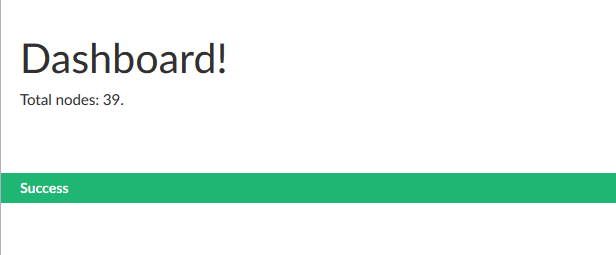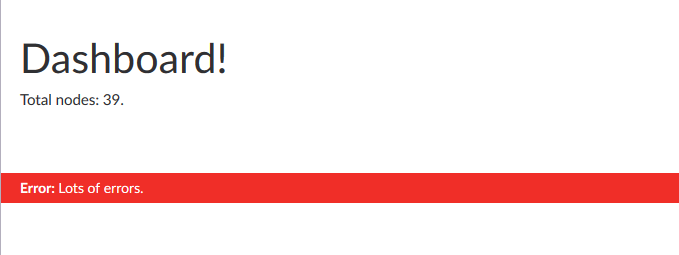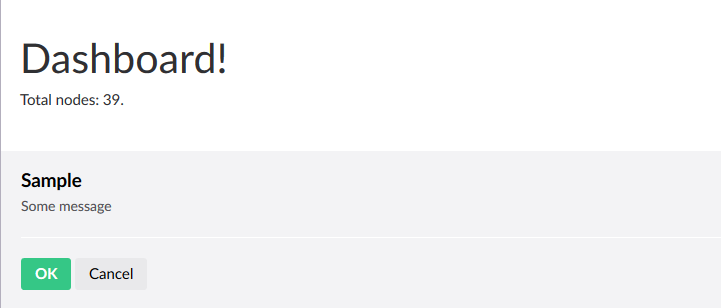Notifications
Umbraco offers a notificationsService which allows you to trigger your own
notifications when some actions finish successfully, or fail. Calling:
notificationsService.success('Success');
will yield:

Calling:
notificationsService.error('Error','Lots of errors.');
will yield:

This is nice, and will inform your users of simple events, but it is also possible to add your own custom content to a notification, including buttons and controllers.
First, we update the dashboard controller to invoke the notification:
(function (angular) {
'use strict';
angular.module('umbraco').controller('DashboardController', DashboardController);
function DashboardController(dashboardService, notificationsService) {
// [..]
notificationsService.add({
view: '/App_Plugins/CustomSection/backoffice/notifications/notification.html',
args: {
heading: "Sample",
message: "Some message",
ok: function () {
console.log("OK clicked");
},
cancel: function () {
console.log("Cancel clicked");
}
}
})
}
})(angular);
In order to display something in this notification, add notification.html in the
notifications folder, containing:
<div class="notification"ng-controller="NotificationController as notification">
<h4>{{notification.heading}}</h4>
<p>
{{notification.message}}
</p>
<hr />
<div class="buttons">
<button class="btn btn-primary" ng-click="notification.ok()">OK</button>
<button class="btn" ng-click="notification.cancel()">Cancel</button>
</div>
</div>
This needs an Angular controller in order to work, so we add notification-controller.js
in the controllers folder (and add it to package.manifest), containing:
(function (angular) {
'use strict';
angular.module('umbraco').controller('NotificationController', NotificationController);
function NotificationController($scope, notificationsService) {
this.notification = $scope.notification;
this.notificationsService = notificationsService;
this.heading = $scope.notification.args.heading;
this.message = $scope.notification.args.message;
this.ok = function () {
this.notificationsService.remove(this.notification);
this.notification.args.ok();
}.bind(this);
this.cancel = function () {
this.notificationsService.remove(this.notification);
this.notification.args.cancel();
}.bind(this);
}
})(angular);
Refreshing the dashboard will yield something like this:

Custom notifications are sticky by default, so they will not auto-hide after 7 seconds.
That’s it, that’s all it takes to add custom notifications to your custom section. If you use them correctly and sparingly, it can really add a level of interactiveness to your section.
Next
Next up is custom dialogs.